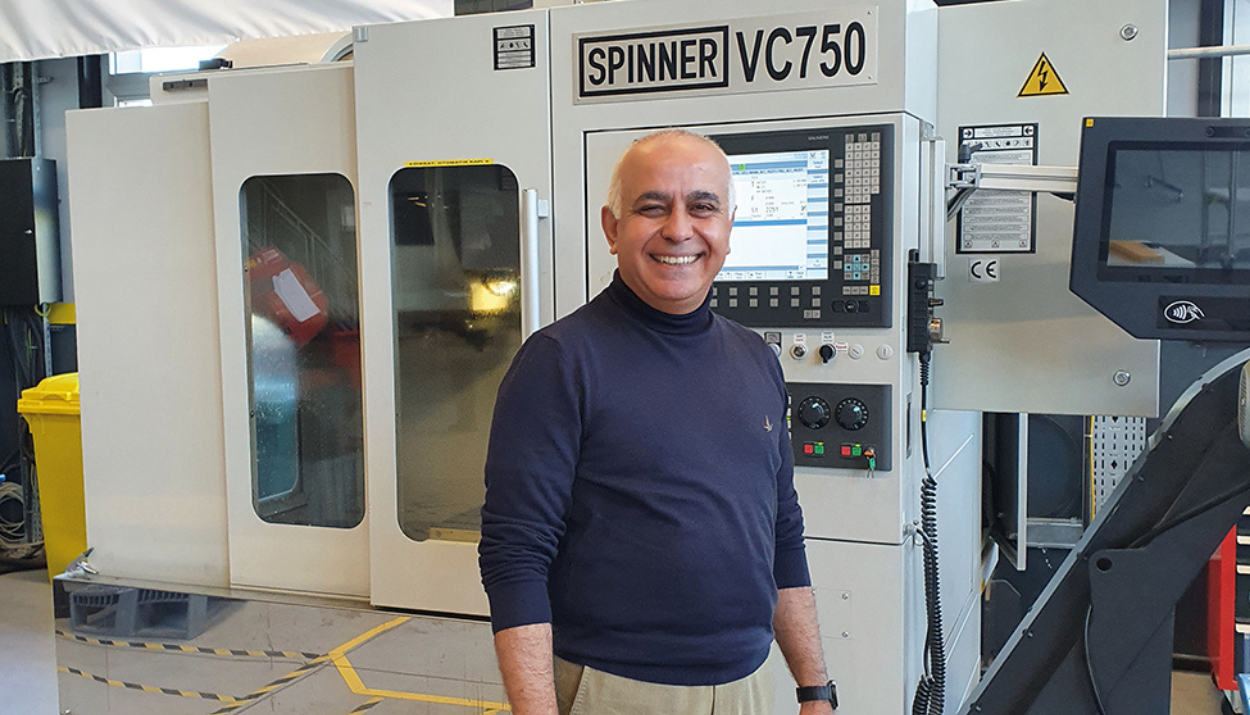Digital twin technology is one of the most notable applications in the manufacturing sector in recent years. However, this transformation is not limited to technology investment alone; it requires streamlined processes, a robust data infrastructure, and a strategic preparation process. ASO Model Factory Business Development and Program Director Ufuk Kaya emphasized that digital twin technology can onlyyield meaningful results with the right transformation infrastructure, stating, “A digital transformation journey that begins without eliminating waste in your current state and without establishing proper cell designs and process flows will only replicate a digital copy of your existing inefficiencies.”
Digital twin technology, which enables the monitoring and analysis of real systems through virtual copies, has become a critical tool in the manufacturing sector, offering efficiency, quality, and cost advantages. In this context, ASO Model Factory Business Development and Program Director Ufuk Kaya, Türkiye’s first Competence and Digital Transformation Center, shared his insights on the contributions of digital twin applications to production processes and the infrastructure preparations required for this transformation to be successful.
- Digital twin technology has been discussed a lot in recent years. First of all, how would you define this concept in terms of the manufacturing world?
The fourth industrial revolution, or Industry 4.0 as it is popularly known around the world, symbolizes a process that reveals how information technologies are accelerating at a dizzying pace in an algorithmic manner and what impact this is having on people, the environment, machinery, skills, and competition. When discussing digital transformation in this context, we must narrow our focus to its impact on the manufacturing sector. Approaching the process from this angle, we observe that certain concepts, though complementary, are often confused with one another. Let us begin by distinguishing between two fundamental elements of digital transformation: digital twins and simulation. Simulation has a much longer history, having been limited to scientific or military projects in the 1960s, but since 2015, it has become a fundamental function of the systems we are part of throughout their entire life cycle. With this application, which can be described as a computer model that mimics real life in its simplest form, we can transform complex problems whose outcomes we cannot predict into multiple options and scenarios by increasing the number and intensity of variables. Using an example from production, we can determine which cell structure to place the workstations we want to put into operation in, their distances, operation times, material transfer routes, how many operators or what kind of line balance we need to work with, all before making the investment. This saves us a tremendous amount of money and time. A digital twin is an application that enables real-time monitoring of existing complex processes and systems, tracking of anomalies and trends, taking preventive measures before problems arise, or responding quickly when problems occur. In summary, while simulation alone focuses on the future, a simulation-based digital twin application focuses on current and past anomalies.
“The core tools of digital marketing are now powered by artificial intelligence”
- Does the use of digital twins in production processes offer advantages?
The goal of all these applications is to make problems visible, respond quickly, and keep processes under control in real time. Digital twins allow you to control all your processes with real and up-to-date data and enable you to use your resources in the most effective way possible.
“Priority is given to lean transformation and process optimization”
- What preparation process should a business follow when deciding to use digital twin technology?
As Türkiye’s first Competence and Digital Transformation Center ASO Model Factory, we emphasize the necessity of lean transformation before implementing digital transformation applications at every opportunity, and we conduct lean transformation, fundamental experiential training, and field programs. In other words, a digital transformation journey that begins without eliminating waste in your current state and without establishing proper cell designs and process flows will not go beyond creating a digital copy of your existing inefficiencies. Therefore, the answer to your question is first and foremost lean transformation and process optimization. Subsequently, you should gradually implement the elements of the production execution system and integrate them with one another.
“An important aspect to consider regarding digital twins is data security”
- Under which legal headings are digital twin applications discussed?
As far as I know, the most debated topic in digital transformation applications is the transition to artificial intelligence applications and decision support systems. These technological applications are being questioned all over the world, both from a legal and ethical perspective. The most important aspect to consider with digital twins is, of course, data security. I believe that companies need to take the necessary precautions themselves to ensure this.
- Is digital twin a technology that only large industrial companies can use? What potential does it offer small and medium-sized companies?
Digital twins are a preferred application, especially in large enterprises with intensive automation lines and processes, hardware, and system components suitable for digital data collection, such as petrochemical plants, power plants, and cement factories. Considering the relatively high initial investment costs, this system requires the establishment of a fundamental technological infrastructure for data collection, analysis, and interconnection within the production execution system, as well as the development of specialized algorithms and software to analyze and interpret this data. I believe that it may take time for SMEs to transition to these applications.
“Many businesses that fail to keep up with change will end up closing down”
- How do you foresee the impact of digital twin technology on the manufacturing sector over the next 5-10 years? What role will this technology play in the new generation of manufacturing?
I would like to answer this question not only in terms of digital twins, but also in terms of Industry 4.0 applications in general. In a world where competition is becoming increasingly fierce, customer habits are changing completely, and resources are becoming increasingly scarce, the only way to survive is to establish flexible structures that can respond quickly to changing demands, make cost-effective improvements, and engage in value-added production. Unfortunately, many businesses that fail to keep up with change over the next 5-10 years will end up closing down. The sector they operate in or their scale of operations will not matter much.




